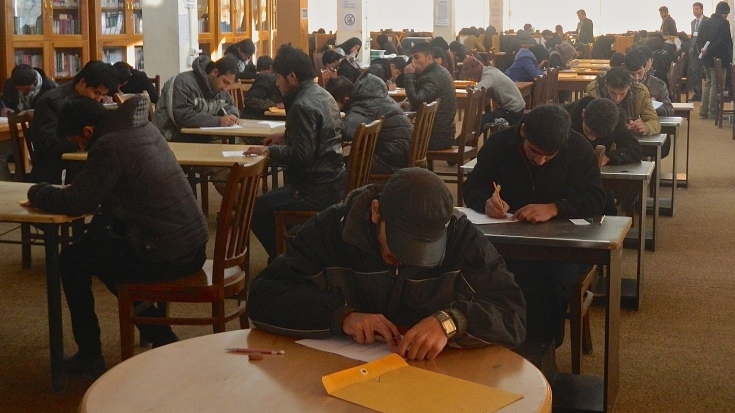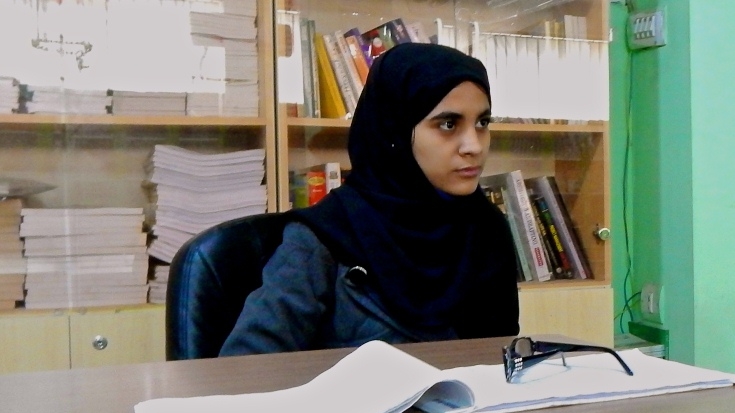KABUL, Afghanistan - More than 1,800 young men and women from across Afghanistan came recently to Kabul to compete in an entrance examination for fewer than 300 places at the National Institute of Management and Administration (NIMA). Classrooms in two nearby institutes had to be used to accommodate the overflow.
“This year, with support from the implementing partner, NIMA conducted an entrance examination to admit students for its 5th batch,” says Totakhil Halimi NIMA Principal adding that, “I should mention that previously NIMA has also conducted entrance examinations but such standards and measure which were followed in this examination were not implemented in the past entrance exams.” He continues to elaborate that previous exams were marred by nepotism, admission criteria was mainly to achieve female and provincial student quotas without consideration to talent and qualification. “In our 5th Batch entrance examination the main criteria for admission was student competence in a very transparent manner,” says Halimi. “This will have significant impact on quality of education at NIMA. However, in this entrance student admission quota was low which we hope should be increased in the future,” he concludes.
This success is a result of the Afghanistan Skills Development Project (ASDP) of the Ministry of Education, supported by the World Bank and Afghanistan Reconstruction Trust (ARTF). The Ministry of Education established NIMA in 2008, an institute with a two-year Management, Accounting and ICT courses, to train young people to contribute to the economic development of Afghanistan.
In 2013, the Ministry of Education awarded a contract under the ASDP to an American institution of higher education, Ball State University (BSU), located in Muncie, Indiana, as an implementing partner to provide consultancy services to assist NIMA in certifying its graduates as meeting international standards and in obtaining accreditation from an internationally recognized body.
NIMA has received notification from the Accreditation Council for Business Schools and Programs (ACBSP), an international accrediting body, that its application for candidacy status had been approved. “Candidacy status is the first stage of the accreditation process,” says Kenneth M. Holland, Director for Center for International Development at Ball State University, “NIMA will be the first public TVET [Technical and Vocational Education Training] institute to have accreditation from an international body.”
Rigorous examination process
One of the responsibilities is to improve the process by which students are admitted to NIMA. “At the beginning admissions were marred by lack of transparency, political interference, nepotism, and allegations of corruption,” says Sajidullah Shirzai, NIMA Manager. As many unprepared high school graduates were admitted, more than half the entering class dropped out before completing their diploma and teachers were put under pressure to pass students who received failing marks, he adds.
Working closely with the institute’s Afghan administrators, BSU’s team of international experts and local office staff designed an examination process of which the government could be proud. One of BSU’s Accounting Department professors designed the entrance examination, a 20-question test modeled after entry level math exams given by technical institutes in the United States and other developed countries. However, the questions were written using terms and monetary values familiar to Afghan students, and consisted of mathematical word problems that tested the applicant’s knowledge of both English and math, skills needed to complete NIMA’s English language curriculum.


